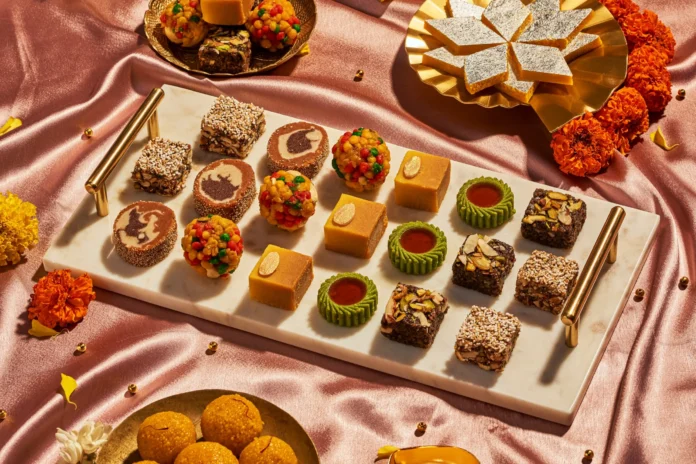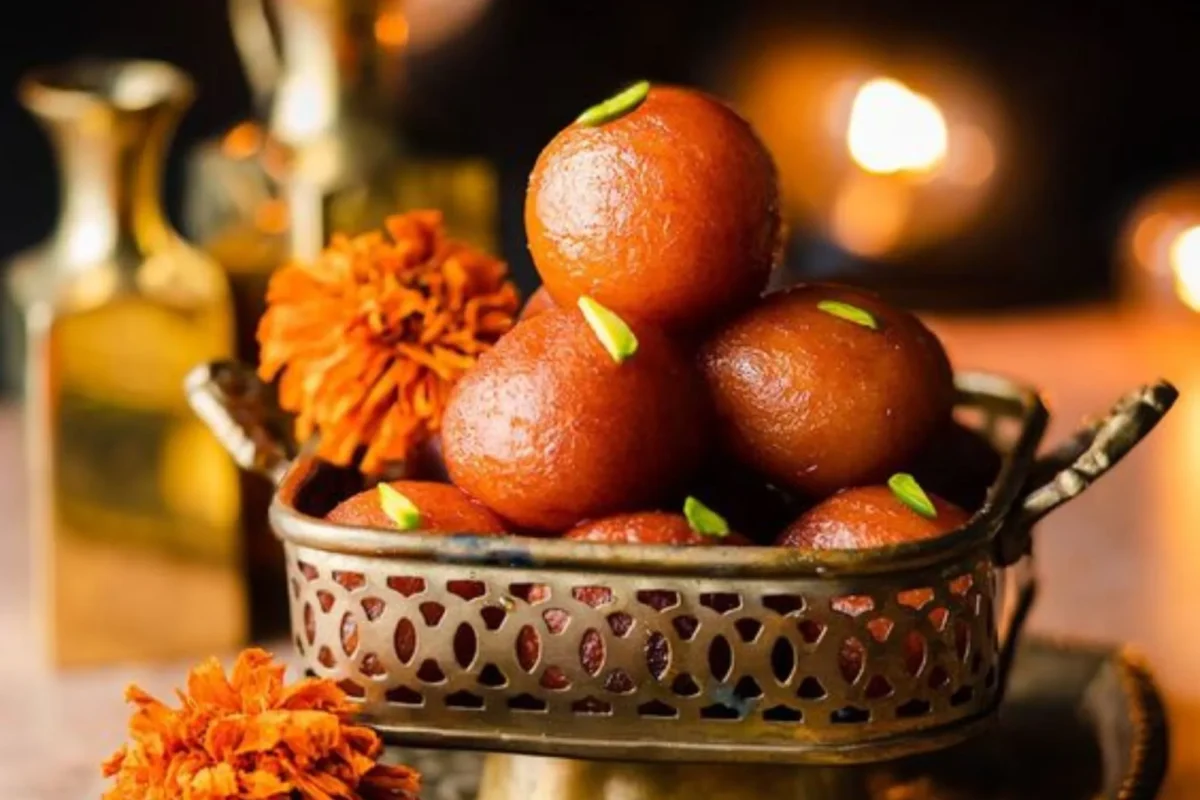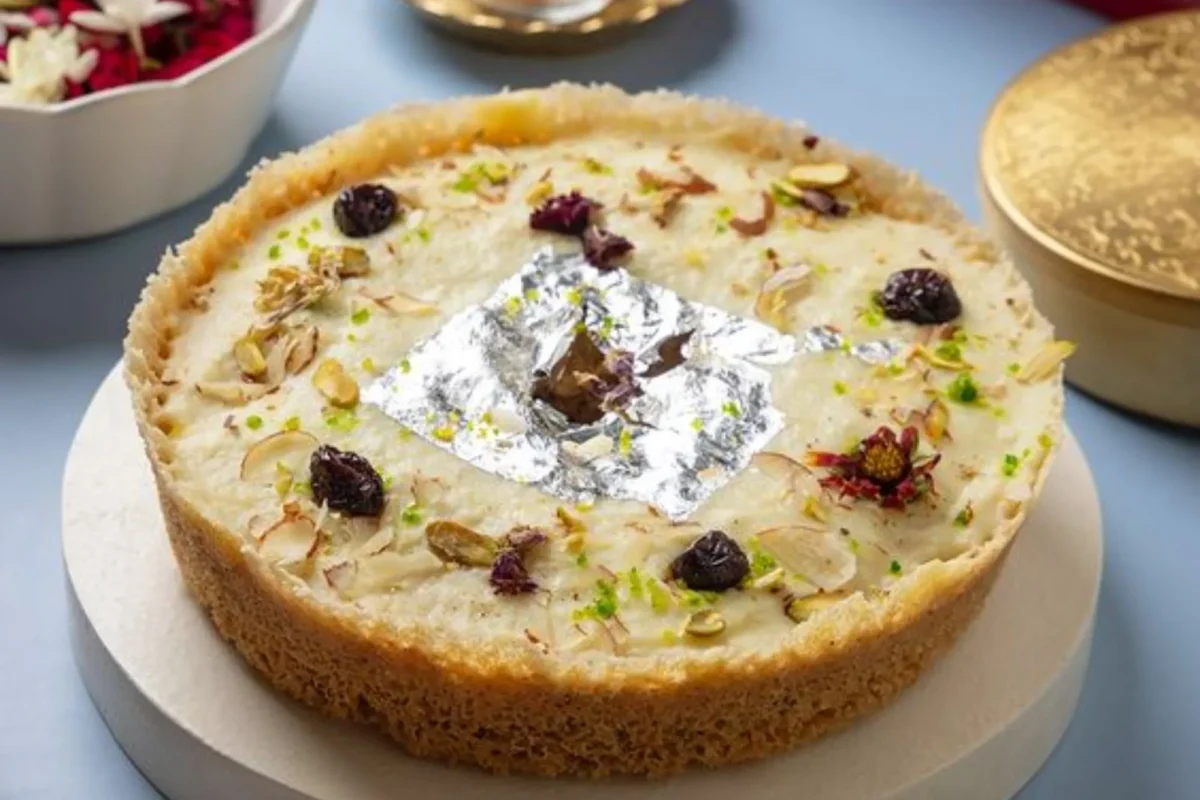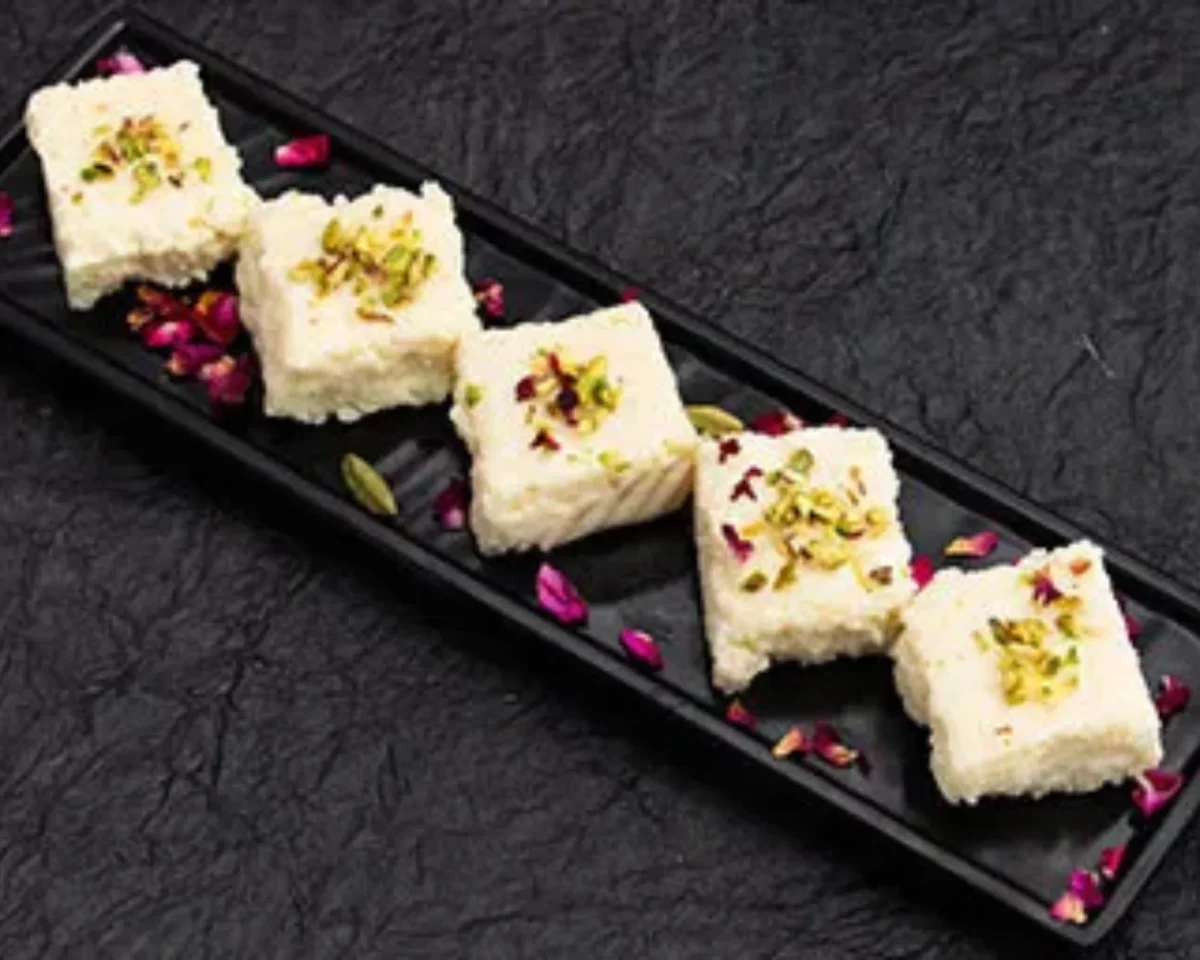Indian weddings and mithai go hand in hand. The sweets that appear on wedding menu are like a metaphor for happiness, prosperity, and new beginnings.
From classic family traditions to modern fusion masterpieces, selecting the right sweets for your wedding can be both thrilling and daunting. This ultimate guide created by our team at Wedding Affair, will assist you in creating the ideal mithai menu that pleases every taste and respects tradition without sacrificing modern tastes.
Table of Contents:
-
The Non-Negotiable Classics
- Regional Specialties That Tell Your Story
- Contemporary Fusion Creations
- Seasonal and Auspicious Considerations
The Non-Negotiable Classics
Every Indian wedding menu needs certain timeless classics that guests expect and cherish. These traditional sweets have stood the test of time for good reason.
Gulab Jamun continues to be the unchallenged king of wedding sweets. These spongy, soft milk-solid balls dipped in scented sugar syrup are a hit with everyone. Whether served warm or at room temperature, gulab jamun never fails. Try having variations such as kesar gulab jamun with saffron or even chocolate gulab jamun for a modern touch.
Jalebi adds both visual beauty and irresistible taste to your dessert platter. The orange-hued curls, with their crispy and syrupy textures, are best eaten fresh and hot. The experience of a jalebi stall with live preparation provides an experiential twist that is much sought after by guests. Serve with rabri for a superior experience that, with textures, is simply divine.
Rasgulla and Rasmalai are the sweet Bengali additions to Indian mithai. Rasgulla, with its light, spongy texture and delicate sweetness, is a pleasant respite from a rich meal. Rasmalai, with its creamy cardamom-flavoured milk reduction and pillowy cheese patties, provides an even richer alternative. Both are popular with crowds and blend richness with lightness.
Barfi in all its guises merits centre stage. Kaju katli (cashew fudge) is usually the most elite mithai, ideal for a wedding gift and offering. Milk barfi, coconut barfi, and pista barfi have variety without compromising on traditional charm. Barfi is beautiful because it is versatile and can be moulded, colored, and ornamented to complement your themed wedding.
Read Also: Hottest Indian Wedding Trends of 2025
Regional Specialities That Tell Your Story
Adding local sweets pays respect to your heritage and exposes visitors to various gastronomic traditions. Such specialities bring authenticity and personal significance to your menu.
North Indian Delights consist of Punjab’s sohan halwa, a nutty wheat halwa that is especially considered lucky for weddings. Rajasthan’s ghewar, with its honeycomb structure and sugar syrup glaze, is visually breathtaking. Pinni, the Punjabi energy ball comprised of wheat flour, ghee, and jaggery, ties in with old-fashioned winter weddings.
South Indian Delights introduce flavors and textures new to the international palate. The spongy, ghee-soaked Mysore pak is a Karnataka special that dissolves on your tongue. The Tamil sweet Adhirasam, made of rice flour and jaggery, presents a chewy, fragrant sensation. Obbattu or Puran Poli, though classed as a bread, works wonderfully as a sweet dish with its lentil-jaggery stuffing.
Eastern Delicacies of Odisha and Bengal highlight milk artistry. Sandesh, which takes many a form and flavor, offers refined varieties not too sweet. Odia chhena poda, the caramelized Odia cottage cheese cake, has a novel burnt-sugar taste. Bengali pantua, the gulab jamun of Bengalis, possesses a special character.
Western Regional Sweets are Gujrati mohanthal, a gram flour fudge packed with ghee and nuts. Puran poli with its sweet lentil paste, saffron and cardamom-flavored shrikhand, and basundi (thickened milk dessert) reflect Maharashtra and Gujarat in all their glory.
Contemporary Fusion Creations
Today’s weddings include innovation, as well as tradition. Fusion mithai unites generations and pleases international palates.
Mithai Meets Western Desserts opens up new and thrilling possibilities. Gulab jamun cheesecake stacks the favorite sweet with smooth cheesecake for an eye-catching fusion dessert. Rasmalai tiramisu replaces classic sponge with delicate rasgulla and mascarpone-rabri cream. Jalebi ice cream, barfi brownies, and motichoor ladoo mousse are all creative fusions of cuisines.
Global Flavor Infusions give new life to conventional sweets. Matcha-infused barfi, rose and pistachio macarons with an Indian variation, chocolate-coated kaju katli, and espresso-flavored rasgulla appeal to modern tastes while being Indian. These innovations are especially welcomed by younger visitors and those used to global flavors.
Healthier Alternatives acknowledge shifting food tastes. Natural sweetener-based sugar-free sweets with dates and stevia enable diabetic guests to indulge. Vegan mithai prepared using plant milk and ghee substitutes cater to dietary needs. Preservative-free, organic sweets cater to health-aware guests. Laddoos made from millet and baked sweets instead of fried ones are healthy indulgences.
Seasonal and Auspicious Considerations
Some sweets are significant due to season and auspicious practices.
Winter Wedding Favorites are gajak and til laddoo using seasonal sesame, gajar ka halwa (carrot halwa) when carrots are sweetest, and dry fruit-laden dishes appropriate for cold weather metabolism.
Summer Wedding Selections opt for lighter ones such as chilled rasmalai and phirni, fruit-based sweets such as aam papad and fresh fruit with rabri, and cooling options such as shrikhand and mishti doi which do not weigh heavy in heat.
Favourable Sweets used in particular ceremonies are motichoor or boondi laddoo for shagun ceremonies, which are particularly auspicious. Peda is commonly used in religious ceremonies and pujas. Modak is of particular importance in a majority of Hindu traditions and is Lord Ganesha’s favorite.
Read Also: 10 Diwali Outfits You’d Love to Try for Festive Season 2025
Frequently Asked Questions
Q: How much mithai should I order per head for a wedding?
A: For a full wedding reception with a full meal, order 150-200 grams per person for mithai, which usually equals 3-4 pieces per person depending on the size of individual sweets. If mithai is your sole dessert without other dessert items, order 250-300 grams per person. Always order 10-15% more to cover for surprise guests and vendor samples.
Q: How far in advance should mithai be made for maximum freshness?
A: It depends on the type of sweet. Syrup-based sweets such as gulab jamun, rasgulla, and jalebi must be prepared for the same day and consumed fresh to get maximum taste and texture. Jalebi in particular must be prepared 2-3 hours prior to serving. Milk-based sweets such as barfi and burfi remain fresh for 2-3 days if kept under refrigeration. Dry sweets such as laddoo, peda, and dry fruit-based sweets can be prepared 4-5 days in advance and kept in air-tight containers.
Q: What’s the best way to display and serve mithai at a wedding?
A: The best method is based on your wedding theme. For sit-down formal dinners, servers can bring mithai thalis to each table or individual katoris to each guest. In buffet receptions, set up a specific dessert station with clear labeling, and replenish popular such as gulab jamun frequently. Live counters for such as jalebi provide entertaining value. Provide climate-controlled display for temperature-sensitive items. Always keep serving staff to handle the mithai counter for cleanliness and presentation.









